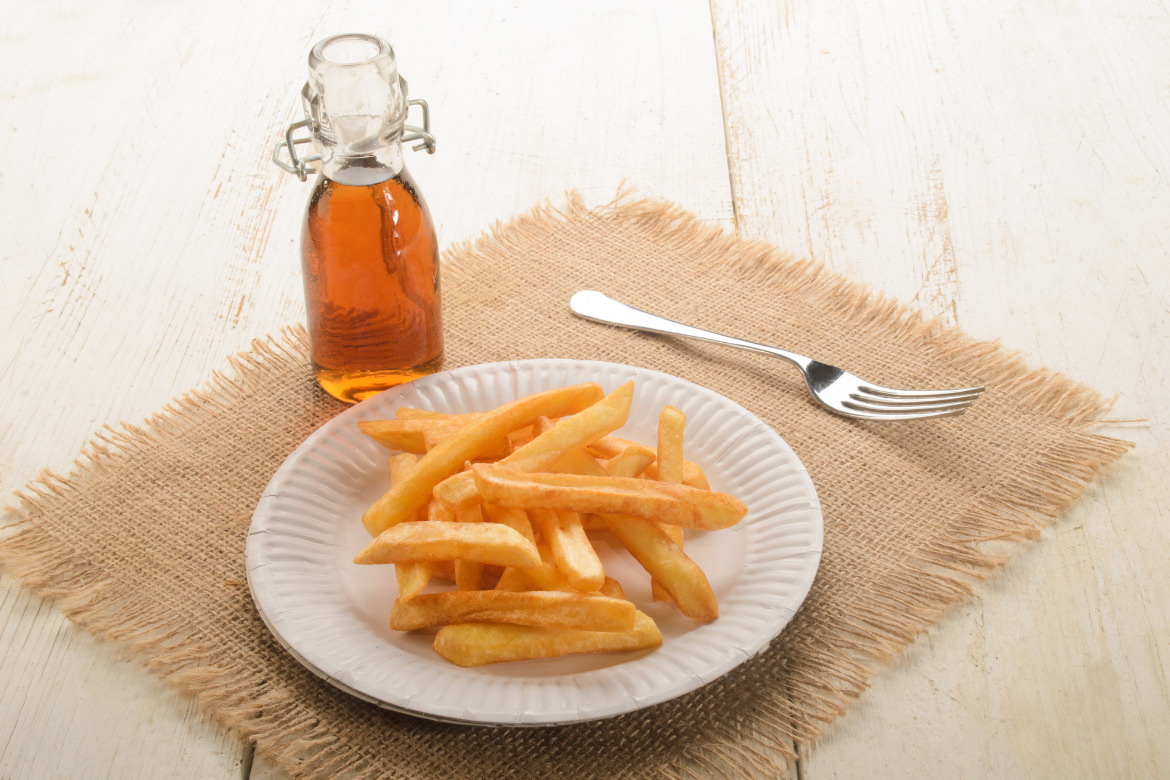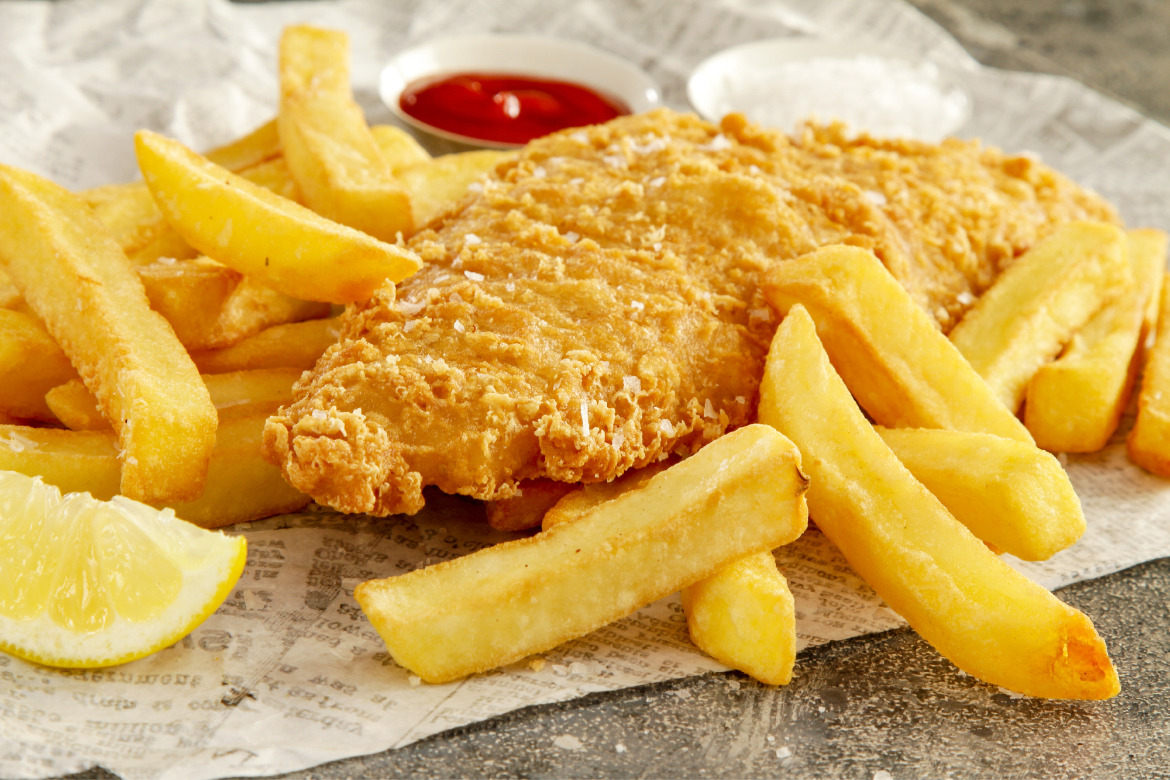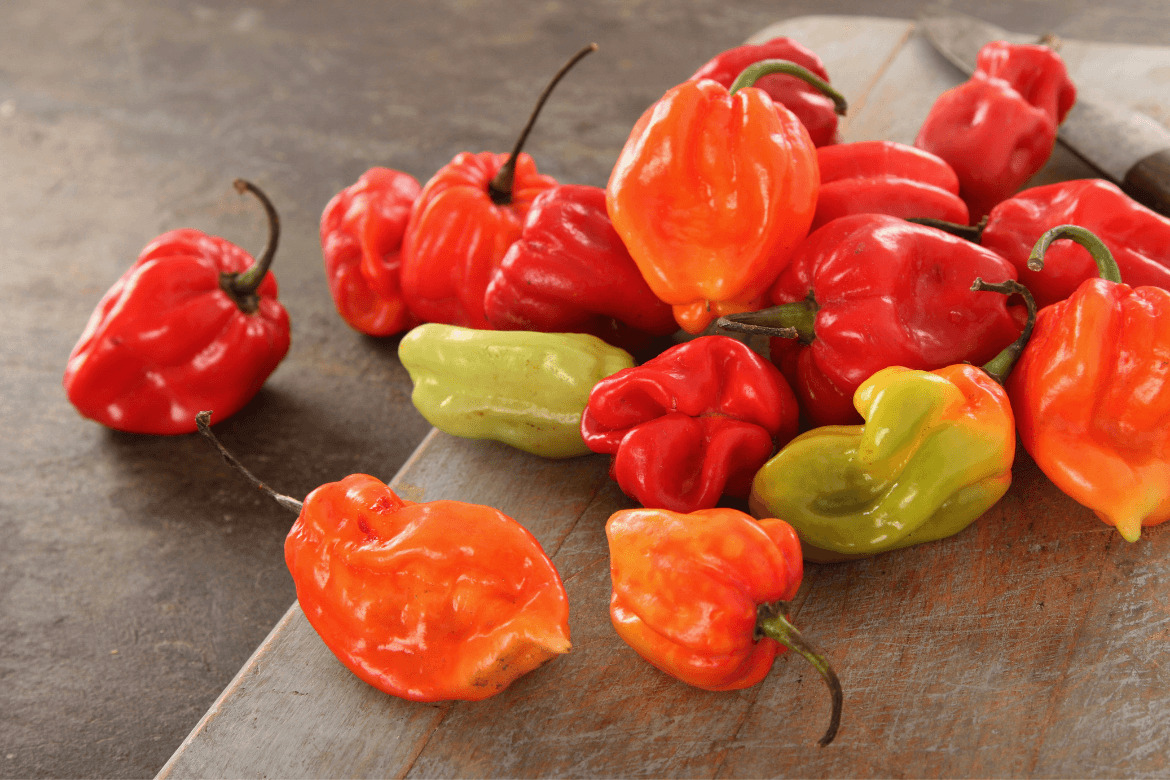Some culinary combos are just meant to be: mac & cheese, grilled cheese & tomato soup, and chicken & waffles, to name a few. In the United Kingdom, though, it’s all about the fish & chips. And while I can’t eat (traditional) fish & chips, I can certainly appreciate them. Growing up in Illinois, our local mall had a fish & chip shop in its food court. An anglophile even back then, I quickly developed a liking for this unique combination. And now that I’m here in England, I’m excited to learn more about where fish & chips came from and how it got to be so iconic. Let’s take a deep dive, shall we?
Chips?
Let’s get the confusing part out of the way first: what we call “chips,” the British call “crisps,” and what they call “chips,” we would generally call good ol’ French fries (bonus fact: American GIs in the First World War started calling pommes frites “French fries” after eating them in Southern Belgium, where French is predominantly spoken). Technically, the British “chip” is a larger, thicker slice of potato than a typical French fry, but the term is often used to refer to any type of fry. Is your head spinning yet? Mine too. And as a lover of both fries and potato chips, it’s made ordering over here interesting, to say the least. As they say, England and America are two countries separated by a common language! Thankfully the fish part is much more straightforward.

Which Fish?
Speaking of fish, the ideal fish for this classic British treat is a tender, flaky white fish that won’t fall apart in the fryer. Cod is the most popular choice, with haddock coming in at a close second. And you may have never heard of plaice, because it tends to only swim in the chilly North Atlantic waters near Great Britain, but this flat, flaky fish is another popular choice at “chippies” (the affectionate nickname for British fish & chip shops). Which fish do you prefer? I might not get to eat it, but I would love to hear in the comments.
Which Sauce?
I would also love to hear which sauce you prefer. In America – as in Australia – tartar sauce is the condiment of choice. In England, though, it’s malt vinegar. In Scotland – which has always marched to the beat of its own drum – they prefer a brown, tomato-based sauce called “chippy sauce.” Being both a purist and a vegan, I have to go with the malt vinegar, but I have plenty of friends who swear by tartar sauce.

Unclear Origins
Whatever brilliant matchmaker first introduced fish to chips to create England’s beloved dish will likely remain a mystery. We do know that fried fish was introduced to England in the 17th century by the country’s Sephardic Jewish community (that is, Jews from Spain and Portugal who fled persecution during the infamous Inquisition). Their dish was based on the Spanish “pescado frito,” literally “fried fish.”
We also know that the first chippies started popping up in England around the middle of the 19th century. Some folks credit London’s Joseph Malin – who sold fish “fried in the Jewish fashion,” as he described it – with opening the first fish and chip shop in his native city. Others credit John Lees with opening the first fish and chip shop in Lancashire, on England’s northwest coast. While we may not know who exactly opened the first fish and chip shop, we know that they created an enduring – and very tasty – culinary legacy.

Fish & Chips’ Legacy
Fish & chips quickly gained popularity, so much so that it became one of the few dishes to not be rationed during World War II (otherwise, we might well have had the ‘fish & chip riot”). The popularity of the classic fish & chip shop has dwindled a bit since those days–from a peak of 35,000 shops in the late 1920s, to just under 11,000 today. There are several reasons for the decline in chippies, from the diversification of British cuisine, to the influx of fast food chains like McDonald’s (sorry about that), to the increased price of fish and oil. Still, 11,000 shops is enough to keep any fish & chips lover busy. And I’m sure I can find a few good vegan alternatives in there somewhere. Let the hunt begin!
If you enjoyed this article or have suggestions on how we can improve it, please leave us a comment below. Also, make sure to check out other articles I’ve created or stories I’ve written about food culture – here.








